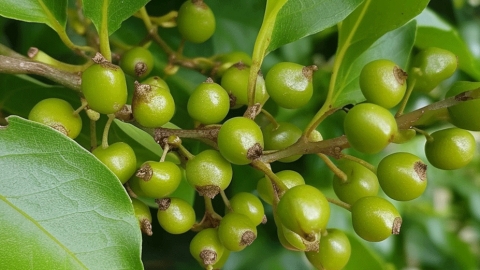The Effects, Uses, and Side Effects of Strychnos nux-vomica (Qianzi)
Generally, Strychnos nux-vomica (Ma Qian Zi) has functions and effects such as promoting blood circulation and removing blood stasis, dispelling wind and eliminating dampness, reducing swelling and relieving pain, treating rheumatic diseases, and exerting anti-inflammatory and antibacterial actions. Its adverse effects include neurotoxicity, muscle rigidity and pain, cardiovascular system damage, gastrointestinal discomfort, and hepatic and renal function impairment. Details are as follows:

I. Functions and Effects
1. Promoting Blood Circulation and Removing Blood Stasis: Strychnos nux-vomica can promote blood circulation and improve the flow of qi and blood. It is especially effective in treating symptoms such as traumatic injuries, swelling and pain from fractures, and rheumatic pain, helping to relieve pain and accelerate recovery.
2. Dispelling Wind and Eliminating Dampness: Strychnos nux-vomica also has the effect of dispelling wind and removing dampness. It can treat symptoms such as limb numbness, restricted joint movement, and hemiplegia caused by invasion of wind-cold-damp pathogens. It helps to expel dampness and cold from the body and restore normal bodily functions.
3. Reducing Swelling and Relieving Pain: Strychnos nux-vomica has the function of reducing swelling and relieving pain. It significantly alleviates symptoms such as sore throat, abscesses, ulcers, and traumatic swelling and pain. It can inhibit inflammatory responses, reduce swelling and pain, and promote wound healing.
4. Treating Rheumatic Diseases: Strychnos nux-vomica is an effective medicine for treating rheumatic diseases such as rheumatoid arthritis and other types of arthritis. It helps relieve joint pain, redness, and swelling, improves joint mobility, and enhances patients' quality of life.
5. Anti-inflammatory and Antibacterial Effects: Strychnos nux-vomica also has anti-inflammatory and antibacterial properties, capable of inhibiting the growth and reproduction of microorganisms such as bacteria and viruses. It is effective in treating infectious diseases and skin inflammation. Additionally, it enhances the body's immunity and resistance.
II. Adverse Effects
1. Neurotoxicity: The alkaloid components in Strychnos nux-vomica can stimulate the central nervous system, increasing neuronal excitability, which may lead to symptoms such as headache, dizziness, delirium, and in severe cases, coma, convulsions, or epileptic-like seizures, posing a threat to the patient's life.
2. Muscle Rigidity and Pain: Strychnos nux-vomica can act on neuromuscular junctions, causing sustained muscle contraction and resulting in muscle rigidity. This adverse effect leads to muscle stiffness, difficulty relaxing muscles, and severe muscle pain. Long-term use may also cause muscle weakness, affecting the patient's daily activities and work capacity.
3. Cardiovascular System Damage: Strychnos nux-vomica significantly affects the cardiac conduction system and may induce arrhythmias. Patients may experience symptoms such as palpitations, chest tightness, and shortness of breath. In severe cases, loss of consciousness or sudden death may occur. Furthermore, Strychnos nux-vomica may cause blood pressure fluctuations, placing additional stress on the heart and vascular system.
4. Gastrointestinal Discomfort: The toxic components of Strychnos nux-vomica can stimulate gastrointestinal smooth muscles, causing symptoms such as nausea, vomiting, abdominal pain, and diarrhea. Prolonged or excessive use of Strychnos nux-vomica may damage the gastric mucosa and further burden the digestive system.
5. Hepatic and Renal Function Impairment: The toxic components of Strychnos nux-vomica are metabolized and excreted through the liver and kidneys. Therefore, long-term use or overdose may impair liver and kidney function. Patients may exhibit signs of abnormal liver and kidney function, such as jaundice, edema, and proteinuria.
When using Strychnos nux-vomica, it is essential to strictly control the dosage and follow medical guidance.








